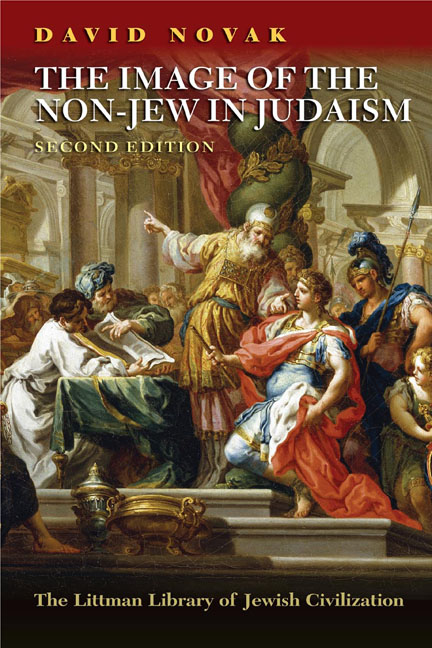Book contents
- Frontmatter
- Dedication
- Preface
- Acknowledgments
- Contents
- Chapter Summaries
- 1 The Origins of the Noahide Laws
- 2 The Law of Adjudication
- 3 The Law of Blasphemy
- 4 The Law of Idolatry
- 5 The Law of Homicide
- 6 The Law of Sexual Relations
- 7 The Law of Robbery
- 8 The Law of the Torn Limb
- 9 Aggadic Speculation
- 10 Maimonides’ Theory of Noahide Law
- 11 Albo's Theory of Noahide Law
- 12 Late Medieval Developments
- 13 Moses Mendelssohn and his School
- 14 Hermann Cohen and the Jewish Neo-Kantians
- 15 Conclusion
- Afterword
- List of Abbreviations
- Notes
- Bibliography
- Index
12 - Late Medieval Developments
- Frontmatter
- Dedication
- Preface
- Acknowledgments
- Contents
- Chapter Summaries
- 1 The Origins of the Noahide Laws
- 2 The Law of Adjudication
- 3 The Law of Blasphemy
- 4 The Law of Idolatry
- 5 The Law of Homicide
- 6 The Law of Sexual Relations
- 7 The Law of Robbery
- 8 The Law of the Torn Limb
- 9 Aggadic Speculation
- 10 Maimonides’ Theory of Noahide Law
- 11 Albo's Theory of Noahide Law
- 12 Late Medieval Developments
- 13 Moses Mendelssohn and his School
- 14 Hermann Cohen and the Jewish Neo-Kantians
- 15 Conclusion
- Afterword
- List of Abbreviations
- Notes
- Bibliography
- Index
Summary
Meiri
Maimonides’ interpretation of the Noahide laws had considerable influence on subsequent generations. His authority on this matter, however, drew more on halakhic definitions rather than philosophical reflection. He defined the Noahide laws as divine law, assigning the prohibition of idolatry as the opening law. Later halakhists took this definition to mean that if a gentile society was not idolatrous, then it could be assumed that its acceptance of the other Noahide laws followed from this religious fact. Maimonides’ definition was commonly employed by halakhists in Christian countries. Such positive assessments were most often made when Jews were left alone by their hosts. The fact that a number of significant European halakhists made such an assessment suggests that medieval Jewish life was not merely a “vale of tears.”
This approach emerges in Menachem ha-Meiri's work. This fourteenthcentury Provençal rabbi insisted, to a degree unmatched by halakhists prior to him, that Noahides were no longer idolaters:
Every Noahide whom we see, who accepts upon himself the seven commandments, is one of the saints of the nations of the world and is in the category of the righteous and he has a portion in the world-to-come.
By acceptance (kabbalah) Meiri means the acceptance of the Noahide laws as divine commandments. However, lacking Maimonides’ philosophical depth, Meiri did not endeavor to constitute an essential relation between theology and moral law. Rather, he simply identifies a historical relation between the two, that is, the Christian affirmation of Noahide morality appears to be accompanied by a denial of idolatry. In separating contemporary Christians from pagan idolaters, Meiri refers to them as “the nations who are bound by religious laws (ha-gedurot be-darkhei ha-datot) and who have renounced polytheism (u-shemudot b'elohut).” If we take the sequence of his presentation literally, the renunciation of idolatry is secondary to the normativity of “the nations.” His interest here is with moral law, not the particulars of Christian theology. In recognizing the Christian affirmation of Noahide morality, Meiri was willing to designate their theology (and associated ritual) as nonidolatrous. This emerges from his definition of dat, denoting “law” and connoting “religion.”
And the other Torahs of the ancient nations and their laws (ve-dataihem): their subject matter is only concerned with political conduct (hanhagot ha-medinah) and human statutes (ve-nimusim) set down by men …
- Type
- Chapter
- Information
- The Image of the Non-Jew in JudaismThe Idea of Noahide Law, pp. 195 - 205Publisher: Liverpool University PressPrint publication year: 2011

